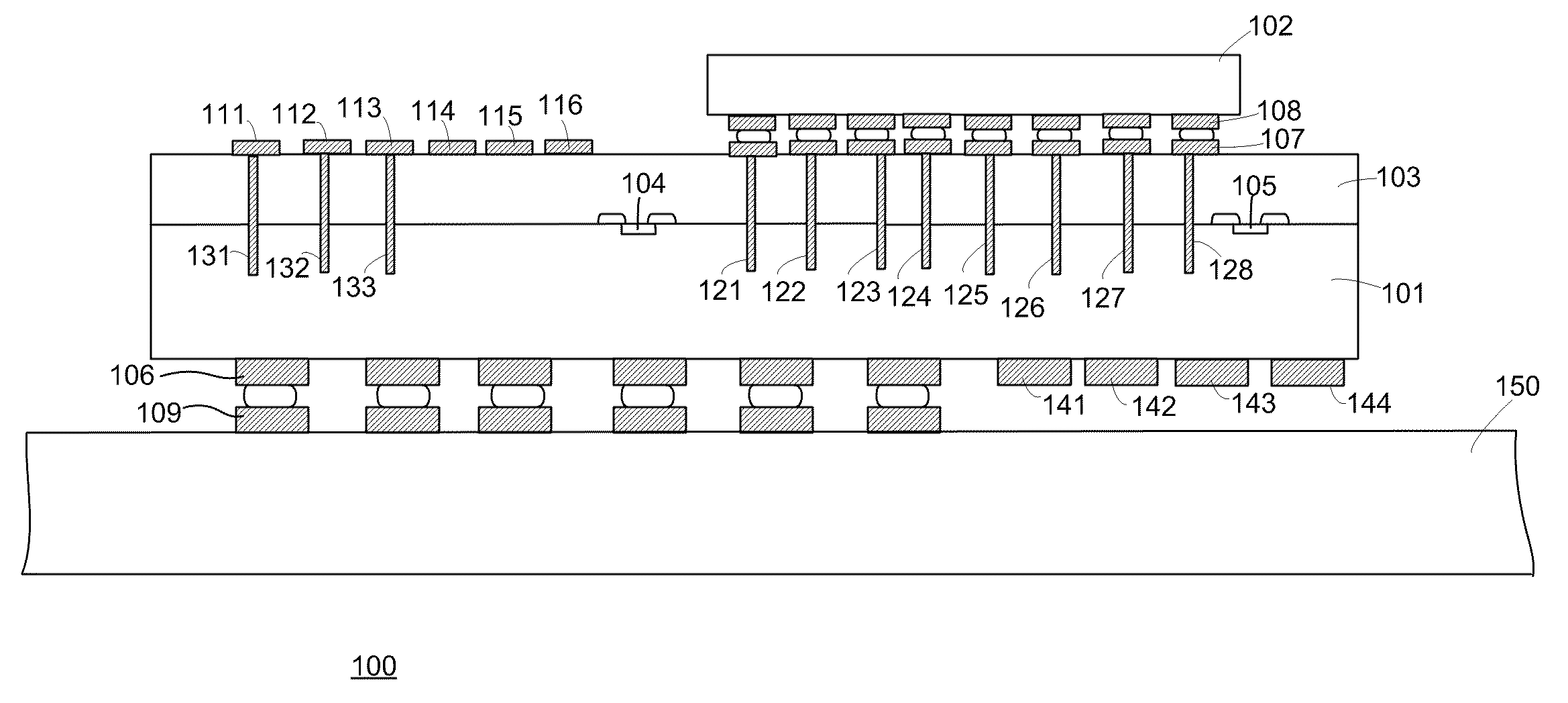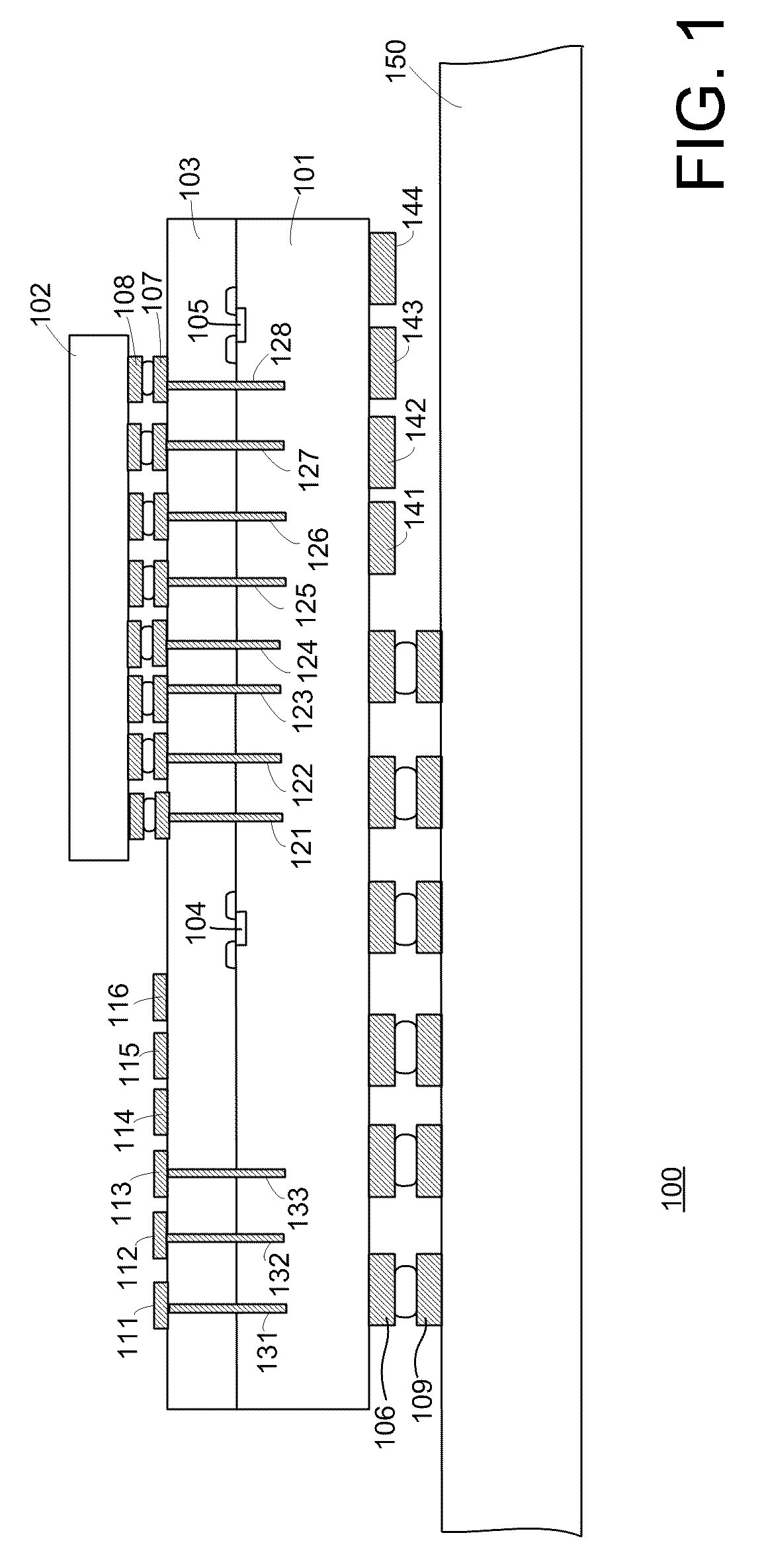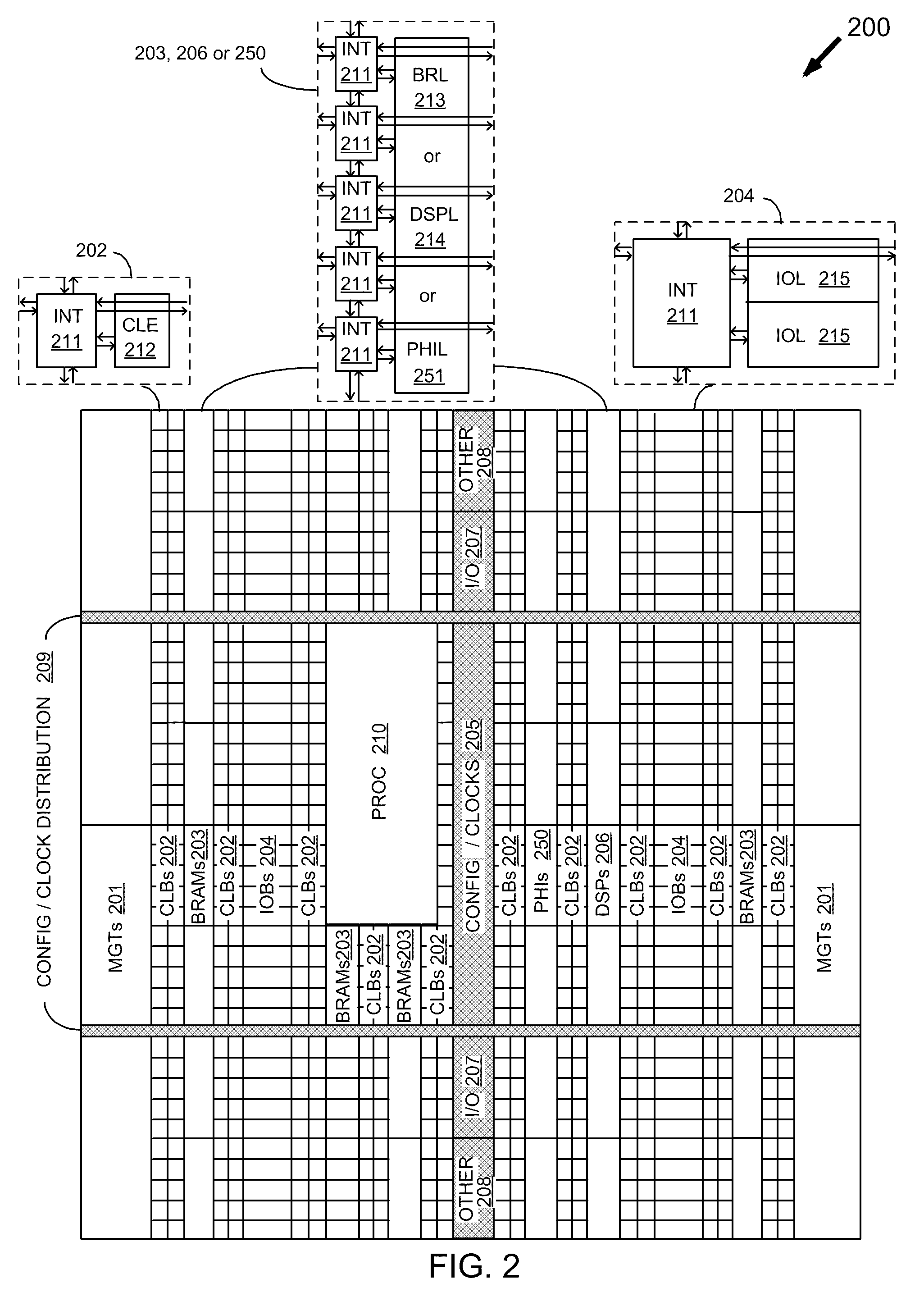Apparatus and method for testing of stacked die structure
a technology of integrated circuits and apparatuses, applied in the direction of measurement devices, instruments, semiconductor devices, etc., can solve the problems of cost saving, process taking significantly less time, and saving manufacturing tim
- Summary
- Abstract
- Description
- Claims
- Application Information
AI Technical Summary
Benefits of technology
Problems solved by technology
Method used
Image
Examples
Embodiment Construction
[0021]FIG. 1 shows an integrated circuit device 100 that includes a base die 101 and a stacked die 102 that is coupled to the back side of base die 101. Base die 101 includes a first set of contacts 107 that are formed the back side of base die 101 and a second set of contacts 106 that are formed on the face side of base die 101. In the present embodiment stacked die 102 is vertically stacked with base die 101, such that the face side of stacked die 102 is mounted to the back side of base die 101, with both of die 101-102 configured for face-down mounting in flip-chip fashion.
[0022]In one embodiment contacts 107 are a grid array of contacts that couple to a corresponding grid array of contacts 108 on stacked die 102 using micro bumps. Base die 101 and stacked die 102 may be any type of digital, analog, or mixed-signal integrated circuit device. In one embodiment base die 101 has a significantly greater surface area than stacked die 102 and more than one stacked die 102 is coupled to...
PUM
 Login to View More
Login to View More Abstract
Description
Claims
Application Information
 Login to View More
Login to View More - R&D
- Intellectual Property
- Life Sciences
- Materials
- Tech Scout
- Unparalleled Data Quality
- Higher Quality Content
- 60% Fewer Hallucinations
Browse by: Latest US Patents, China's latest patents, Technical Efficacy Thesaurus, Application Domain, Technology Topic, Popular Technical Reports.
© 2025 PatSnap. All rights reserved.Legal|Privacy policy|Modern Slavery Act Transparency Statement|Sitemap|About US| Contact US: help@patsnap.com



